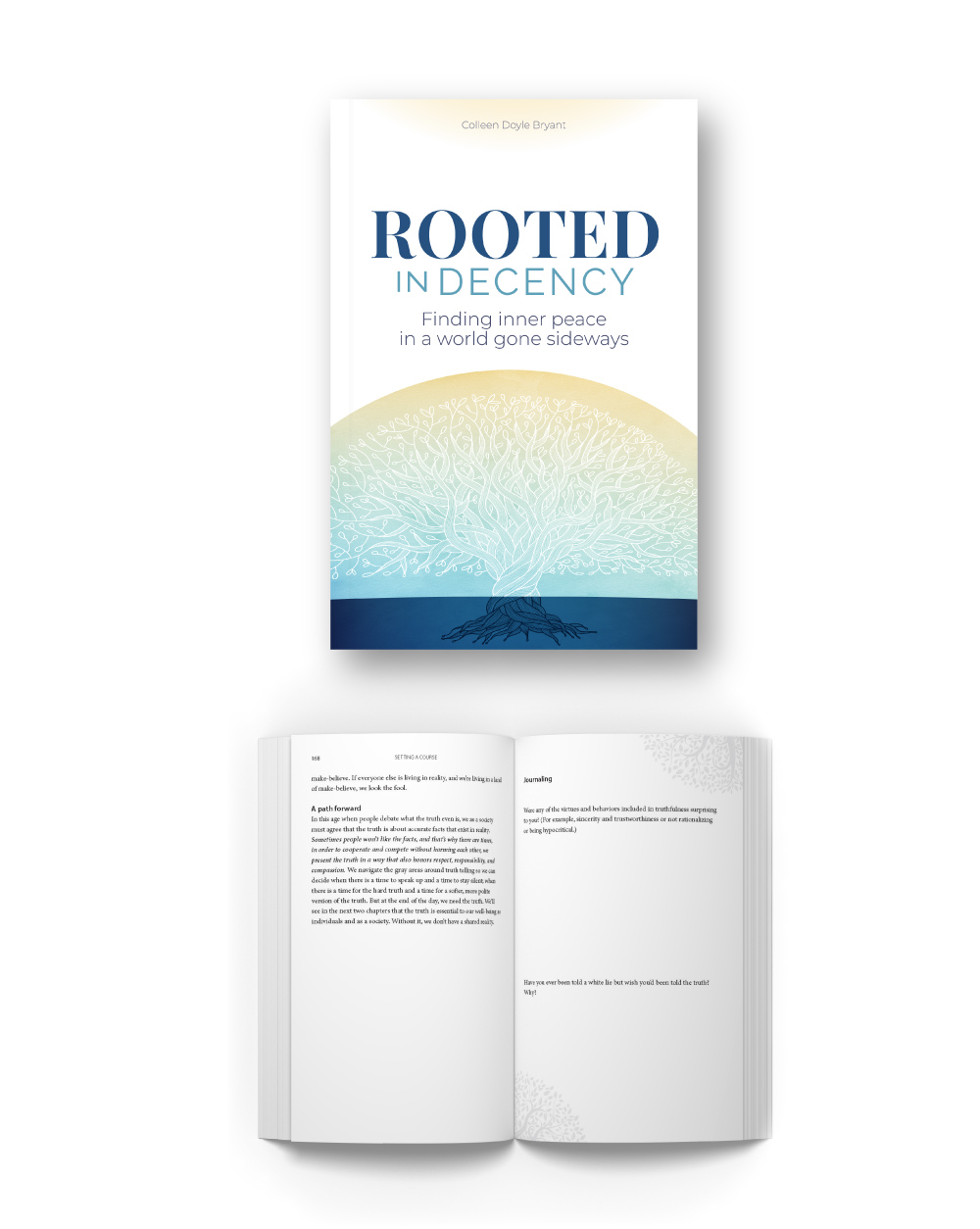
Have you noticed how people talk about nearly every situation as if we’re constantly in a state of impending doom? Or like everyday issues are a really big deal? Speaking in extremes has become so common, that we probably don’t realize we’re doing it. But words matter, and keeping ourselves in a constant state of stress and worry is not helping people’s sense of mental wellbeing.
This extreme negativity can interrupt our ability to build self-respect, and it can make us feel like we’re at the mercy of unrelenting forces beyond our control and that’s bad news for our sense of agency—a psychological term that means we know that we have control over our own lives. In fact, researchers have shown that when people’s mental health is suffering due to stress, they can either decrease the stress, or they can increase their sense of agency and get similar benefits. So, if we want better mental wellbeing, it would be a good idea to step away from language that makes it seem like we have less control over our lives and recognize our own power to make choices that help us handle whatever comes our way.
The first step to changing the way we’re seeing and talking about events is to recognize when we’re being overly negative. So let’s take a quick browse through Cognitive Distortions—this is another psychological term and it refers to common ways that people view events in their lives that make those events seem worse than they really are. You may find that you sometimes view events through a filter of cognitive distortions, or maybe you know someone who does. Either way, it’s easier to create wellbeing when we have an idea of what’s throwing us off balance, so let’s get to know Cognitive Distortions.
Cognitive Distortions that may be affecting your mental wellness
(The following is an excerpt from Rooted in Decency: Finding inner peace in a world gone sideways. Reprinted with permission from the author.)
A typical conversation between two colleagues:
Ash: How can they think that? Clearly, they’re all idiots. This whole thing is a disaster. If this goes through, life as we know it is over. They must think we’re second rate. I feel like every time we do a deal with them, we never get anything we want.
Forrest: Hmm. When I presented the idea yesterday, they said almost the exact same thing about us.
Cognitive distortions are automatic ways of thinking that bend people’s view of reality, often inflating their perception of negativity and hopelessness. When cognitive distortions become habitual, they can turn passing sadness into a persistent unhappiness or depression by creating a self-reinforcing cycle of negativity. To prevent cognitive distortions from inflating negative, mindless thinking, the first thing we need is to be able to recognize them. So, let’s take a look at cognitive distortions and see if you’ve ever seen any of these thought patterns.
Forms of cognitive distortions:
Adapted from Feeling Good, by Dr. David Burns.
All-or-Nothing Thinking
Viewing people or situations only in terms of extremes without nuance or complexity.
Examples:
This didn’t go the way I planned so I’m a total failure.
This whole project is worthless.
You’re either with me or you’re against me.
Overgeneralizing
Seeing a single example and thinking it’s a universal rule.
Examples:
Everyone is always mean to me.
She hates everything that I stand for.
We never get what we want.
Negative Filtering and Discounting Positives
Only seeing the negative aspects of a situation or thinking positive aspects are not important when they conflict with the negative view you want to hold.
Examples:
The one thing I got wrong is way more important than all the things I got right.
He hasn’t done anything worthwhile for me in ten years!
Mind Reading and Fortune Telling
Assuming you know what someone else is thinking, or predicting what’s going to happen without evidence.
Examples:
He didn’t respond so he must be mad at me.
They’re all thinking about how dumb my ideas are.
She’ll never like what we propose anyway.
Catastrophizing and Minimization
Grossly exaggerating or minimizing the importance of things.
Examples:
This is the worst thing ever!
He thinks I shouldn’t even exist.
This will ruin my life.
Emotional Reasoning
Deciding that because you feel it’s true, it must be true.
Examples:
I feel sad so the situation is hopeless.
This feels overwhelming, so it must be impossible to change.
It feels like you’re out to get me, so I’m certain you are.
Should Statements
Holding unrealistic or unnecessary ideas of how things “should” be.
Examples:
I should be able to be perfect at raising kids, being a spouse, having a career—and do it with a smile.
I should have had more time with him before he passed on.
They shouldn’t do that; I wouldn’t.
Labeling
Looking at one behavior or characteristic of a person and using it to define everything about that person.
Examples:
I’m a loser.
She’s a bitch.
He’s a transphobe.
They’re elites.
Personalization / Blaming
Assigning someone responsibility for a negative event that’s not realistically their fault.
Examples:
It’s my fault my son didn’t get an “A”.
It’s her fault that I keep getting into trouble.
I know they weren’t even here when this whole thing started, but it’s still their fault.
Cognitive distortions in action
Anyone who has spent time around teenagers is likely to have heard something like, “No one ever gets me!”, “My life is ruined!”, and “They’re always so unfair to me!”; and as the adults in their lives, we often recognize these thought patterns for the exaggerations that they are. But what about us? It may not be so easy to recognize our own cognitive distortions. Yet, being aware of these patterns of thinking can help us break through automatic thought cycles that swing us to extremes. Using the opening dialog as an example:
“How can they think that? Clearly they’re all idiots.” — Here’s some labeling and overgeneralizing. More likely, they have reasons behind their thinking that could be addressed rationally.
“This whole thing is a disaster. If this goes through, life as we know it is over.” — Catastrophizing gets in the way of creating a reasonable action plan.
“They must think we’re second rate. I feel like every time we do a deal with them, we never get anything we want.” — Mind reading and emotional reasoning can create false assumptions that misguide our decisions.
Whether we’re criticizing ourselves or interpreting other people’s actions, cognitive distortions make things feel worse than they really are, and they create a self-reinforcing negativity that makes it hard to find a way back to a positive state.
A society lost in distortion
Usually, cognitive distortions are something we look at on an individual level, when repetitive negative thinking impacts someone’s mental well-being. But, as you read the cognitive distortion examples above, you may have noticed that we’re hearing similar patterns at a societal level today. When you listen to the news or read headlines, you’ll likely see catastrophizing. Listen to political discussions and you’ll hear negative filtering and emotional reasoning. And often it’s wrapped in a package of all-or-nothing “us and them”. If cognitive distortions can lead an individual’s unhappiness toward depression, what happens when a society surrounds itself with a constant stream of negative, catastrophized, overgeneralized, all-or-nothing thinking?
(...See more of this chapter in Rooted in Decency, Chapter 2: Mindless Thinking...)
Clarity amid cognitive distortions

The good news is, we already know how to overcome cognitive distortions and how to start thinking in a more balanced, healthier way. Research shows that one of the most effective ways to interrupt a cycle of automatic negative thinking is with Cognitive Behavior Therapy (CBT). In Feeling Good, one of the leading resources for CBT, author David Burns, M.D., offers numerous self-guided techniques to help people think differently and create lasting changes to their outlook. At the core of all CBT techniques is the need to recognize when we’re allowing cognitive distortions to influence our thinking. Then, we can break the cycle by questioning those thoughts and choosing how to react.
To interrupt mindless thinking, ask yourself:
What evidence do I have about the truth of this?
How might cognitive distortions be impacting my interpretation?
What are some other perspectives for looking at it?
Burns proposes the triple-column technique to get clarity on a negative thought. Each column helps us define the thought and the distortion, and then helps us propose some alternate ways of viewing it. Here are some examples of the triple-column technique in action:
Automatic Thought
This will ruin my life.
Cognitive Distortion
Catastrophizing
Rational Response
Which aspects of your life does it really affect? Which aspects won’t it affect? How impactful will it really be? What are some things you could do to lessen the impact?
Automatic Thought
She hates everything that I am.
Cognitive Distortion
Overgeneralizing
Rational Response
Which specific attributes or actions does she object to? What other attributes do you have that she doesn’t object to? Is this about you as a person or a specific issue?
The triple-column technique is one tool to clarify the situation and to reengage in mindful, rational thinking.
Where to go from here
Cognitive distortions are happening in individual lives, but you may have noticed how similar this language sounds to what we hear in the headlines. If you want to know more about how cognitive distortions and other society-level behaviors may be impacting your wellbeing, pick up a copy of Rooted in Decency. Each short chapter offers a-ha insights about why we’re feeling so off balance in today’s divisive culture and offers actionable ideas on how to improve your mental wellness.
Free Journaling Page
Download a free Journaling Page from the book with prompts to help you learn more about Cognitive Distortions.
This page includes affiliate links.







